Transition to Renewable Energy for Communities: Energy Storage Requirements and Dissipation
Abstract
:1. Introduction
2. Electric Power Demand and Supply
3. Governing Equations
- An installed wind capacity for the community (in MW) is prescribed.
- An initial hydrogen quantity for the storage system on the first hour of the year, S(1), is assumed.
- The total area of the PV system is also assumed.
- During a given hour of the year, the solar- and wind-generated energy is computed.
- From the total energy generated and the demand, the hourly energy surplus or deficit is calculated at every one of the 8760 h of the year.
- The total quantities of stored energy and associated mass of hydrogen are also calculated at all hours.
- The stored energy at the end of the year, S(8760), is calculated and compared to S(1), at the beginning of the year. If S(1) > S(8760), more energy needs to be generated. Hence, the PV area is increased and steps 4–6 are repeated. If S(1) < ES8760, the PV area is decreased and steps 4–6 are repeated until S(1) = S(8760). This first iterative process determines the correct value of the solar capacity (step 2), which supplements the prescribed wind capacity of step 1.
- The correct value for S(1) in step 2 is determined by a second iteration, using the constraint that, on the day of the minimum hydrogen storage, the energy storage system must have enough hydrogen stored to satisfy the entire electricity demand of the community for the next 10 days (240 h).
4. Results and Discussion
- The RES provide the community its electric power demand only.
- The RES provide the electric power demand as well as the heat needed in the winter months for domestic comfort and hot water. Heat is provided by heat pumps.
4.1. Electricity Supply Only
4.2. Electricity and Heat Supply
4.3. Carbon Dioxide Avoidance
5. Conclusions
Funding
Informed Consent Statement
Data Availability Statement
Acknowledgments
Conflicts of Interest
References
- Intergovernmental Panel on Climate Change (IPCC). Climate Change 2007: Synthesis Report. Contribution of Working Groups I, II and III to the Fourth Assessment Report of the Intergovernmental Panel on Climate Change; Intergovernmental Panel on Climate Change (IPCC): Geneva, Switzerland, 2007. [Google Scholar]
- International Energy Agency. CO2 Emissions from Fuel Combustion—Overview; IEA-Chirat: Paris, France, 2019. [Google Scholar]
- Ritchie, H.; Roser, M. CO2 and Greenhouse Gas Emissions. In Our World In Data; Global Change Data Lab.: Oxford, UK, 2020; Available online: https://ourworldindata.org/co2-and-other-greenhouse-gas-emissions (accessed on 4 August 2022).
- International Energy Agency. Key World Statistics; IEA-Chirat: Paris, France, 2018. [Google Scholar]
- International Energy Agency. Key World Statistics; IEA-Chirat: Paris, France, 2020. [Google Scholar]
- International Energy Agency (IEA). Global Energy Review; International Energy Agency (IEA): Paris, France, 2021; Available online: www.iea.org (accessed on 20 February 2022).
- International Energy Agency. Net Zero by 2050—A Roadmap for the Global Energy Sector; IEA-Chirat: Paris, France, 2021. [Google Scholar]
- Intergovernmental Panel on Climate Change (IPCC). Climate Change 2014: Synthesis Report. Contribution of Working Groups I, II and III to the Fifth Assessment Report of the Intergovernmental Panel on Climate Change; Pachauri, R.K., Meyer, L.A., Eds.; Intergovernmental Panel on Climate Change (IPCC): Geneva, Switzerland, 2014. [Google Scholar]
- Intergovernmental Panel on Climate Change (IPCC). Global Warming of 1.5 °C. An IPCC Special Report on the Impacts of Global Warming of 1.5 °C above Pre-Industrial Levels and Related Global Greenhouse Gas Emission Pathways, in the Context of Strengthening the Global Response to the Threat of Climate Change, Sustainable Development, and Efforts to Eradicate Poverty; Intergovernmental Panel on Climate Change (IPCC): Geneva, Switzerland, 2019. [Google Scholar]
- Michaelides, E.E. Energy, the Environment, and Sustainability; CRC Press: Boca Raton, FL, USA, 2018. [Google Scholar]
- Argyrou, M.C.; Christodoulides, P.; Kalogirou, S.A. ES for electricity generation and related processes: Technologies appraisal and grid scale applications. Renew. Sustain. Energy Rev. 2018, 94, 804–821. [Google Scholar] [CrossRef]
- Mahlia, T.M.I.; Saktisahdan, T.J.; Jannifar, A.; Hasan, M.H.; Matseelar, H.S.C. A review of available methods and development on ES; Technology update. Renew. Sustain. Energy Rev. 2014, 33, 532–545. [Google Scholar] [CrossRef]
- Michaelides, E.E. Thermodynamics, Energy Dissipation, and Figures of Merit of Energy Storage Systems—A Critical Review. Energies 2021, 14, 6121. [Google Scholar] [CrossRef]
- Freeman, E.; Occello, D.; Barnes, F. ES for Electrical Systems in the USA. AIMS Energy 2016, 4, 856–875. [Google Scholar] [CrossRef]
- California ISO (CAISO). What the Duck Curve Tells Us about Managing a Green Grid. 2016. Available online: https://www.caiso.com/Documents/FlexibleResourcesHelpRenewables_FastFacts.pdf (accessed on 4 August 2022).
- Michaelides, E.E. Energy Storage and Installed Wind Capacity Requirements for the Substitution of Fossil Fuels in the Electricity Generation Sector. J. Energy Power Technol. 2021, 3, 18. [Google Scholar] [CrossRef]
- Headley, A.J.; Copp, D.A. Energy storage sizing for grid compatibility of intermittent renewable resources: A California case study. Energy 2020, 198, 117310. [Google Scholar] [CrossRef]
- Supapo, K.R.M.; Lozano, L.; Tabañag, I.D.F.; Querikiol, E.M. A Backcasting Analysis toward a 100% Renewable Energy Transition by 2040 for Off-Grid Islands. Energies 2022, 15, 4794. [Google Scholar] [CrossRef]
- Tarife, R.; Nakanishi, Y.; Chen, Y.; Zhou, Y.; Estoperez, N.; Tahud, A. Optimization of Hybrid Renewable Energy Microgrid for Rural Agricultural Area in Southern Philippines. Energies 2022, 15, 2251. [Google Scholar] [CrossRef]
- Hidalgo-Leon, R.; Amoroso, F.; Urquizo, J.; Villavicencio, V.; Torres, M.; Singh, P.; Soriano, G. Feasibility Study for Off-Grid Hybrid Power Systems Considering an Energy Efficiency Initiative for an Island in Ecuador. Energies 2022, 15, 1776. [Google Scholar] [CrossRef]
- Kartalidis, A.; Atsonios, K.; Nikolopoulos, N. Enhancing the self-resilience of high-renewable energy sources, interconnected islanding areas through innovative energy production, storage, and management technologies: Grid simulations and energy assessment. Int. J. Energy Res. 2021, 45, 13591–13615. [Google Scholar] [CrossRef]
- Zygmunt, M.; Gawin, D. Application of the Renewable Energy Sources at District Scale—A Case Study of the Suburban Area. Energies 2022, 15, 473. [Google Scholar] [CrossRef]
- Sandoval Aguilar, R.; Michaelides, E.E. Microgrid for a Cluster of Grid Independent Buildings Powered by Solar and Wind Energy. Appl. Sci. 2021, 11, 9214. [Google Scholar] [CrossRef]
- Al-Ghussain, L.; Abujubbeh, M.; Darwish Ahmad, A.; Abubaker, A.M.; Taylan, O.; Fahrioglu, M.; Akafuah, N.K. 100% Renewable Energy Grid for Rural Electrification of Remote Areas: A Case Study in Jordan. Energies 2020, 13, 4908. [Google Scholar] [CrossRef]
- Husein, M.; Kim, H.-J.; Chung, I.-Y. The Impact of Policy and Technology Parameters on the Economics of Microgrids for Rural Electrification: A Case Study of Remote Communities in Bolivia. Energies 2020, 13, 877. [Google Scholar] [CrossRef]
- Gaeta, M.; Nsangwe Businge, C.; Gelmini, A. Achieving Net Zero Emissions in Italy by 2050: Challenges and Opportunities. Energies 2022, 15, 46. [Google Scholar] [CrossRef]
- Leonard, M.D.; Michaelides, E.E.; Michaelides, D.N. Energy Storage Needs for the Substitution of Fossil Fuel Power Plants with Renewables. Renew. Energy 2019, 145, 951–962. [Google Scholar] [CrossRef]
- Trócoli, R.; Morata, A.; Erinmwingbovo, C.; La Mantia, F.; Tarancó, A. Self-discharge in Li-ion aqueous batteries: A case study on LiMn2O4. Electrochim. Acta 2021, 373, 137847. [Google Scholar] [CrossRef]
- Chung, S.H.; Manthiram, A. Lihium–Sulfur Batteries with the Lowest Self-Discharge and the Longest Shelf life. ACS Energy Lett. 2017, 2, 1056–1061. [Google Scholar] [CrossRef]
- Energy Reliability Council of Texas (ERCOT). Available online: https://www.ercot.com/gridinfo/generation (accessed on 5 August 2022).
- Wilcox, S. National Solar Radiation Database 1991–2010 Update: User’s Manual; Technical Report NREL/TP-5500-54824; National Renewable Energy Lab.: Golden, CO, USA, 2012.
- Dubey, S.; Sarvaiya, N.J.; Sheshadri, B. Temperature dependent Photovoltaic (PV) efficiency and its effect on PV production in the world—A review. Energy Procedia 2013, 33, 311–321. [Google Scholar] [CrossRef]
- Leonard, M.D.; Michaelides, E.E. Grid-Independent Residential Buildings with Renewable Energy Sources. Energy 2018, 148, 448–460. [Google Scholar] [CrossRef]
- Leonard, M.D.; Michaelides, E.E.; Michaelides, D.N. Substitution of coal power plants with renewable energy sources—Shift of the power demand and energy storage. Energy Convers. Manag. 2018, 164, 27–35. [Google Scholar] [CrossRef]
- Michaelides, E.E.; Michaelides, D.N. Impact of nuclear energy on fossil fuel substitution. Nucl. Eng. Des. 2020, 366, 110742. [Google Scholar] [CrossRef]
- REFPROP. Reference Fluid Thermodynamic and Transport Properties; Version 9.1; NIST Standard Reference Data Basis: Gaithersburg, MD, USA, 2012. [Google Scholar]
- US-Department of Energy. Available online: https://www.energy.gov/energysaver/heat-pump-systems (accessed on 4 August 2022).
- Energy Reliability Council of Texas (ERCOT). Available online: https://www.ercot.com/search?q=CO2+production&year=2022 (accessed on 4 August 2022).
- US Energy Information Agency. Available online: https://www.eia.gov/energyexplained/natural-gas/natural-gas-and-the-environment.php (accessed on 4 August 2022).
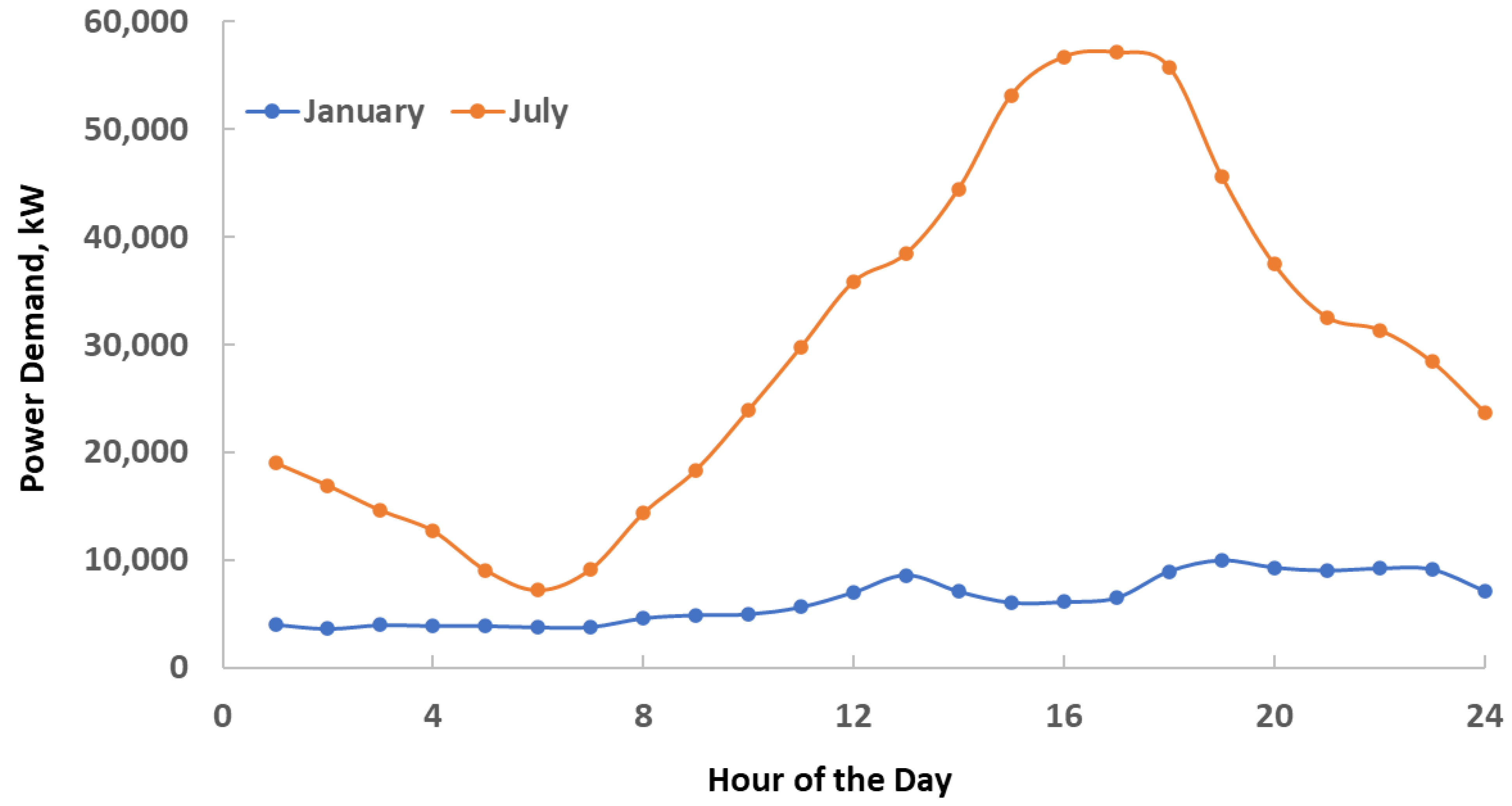
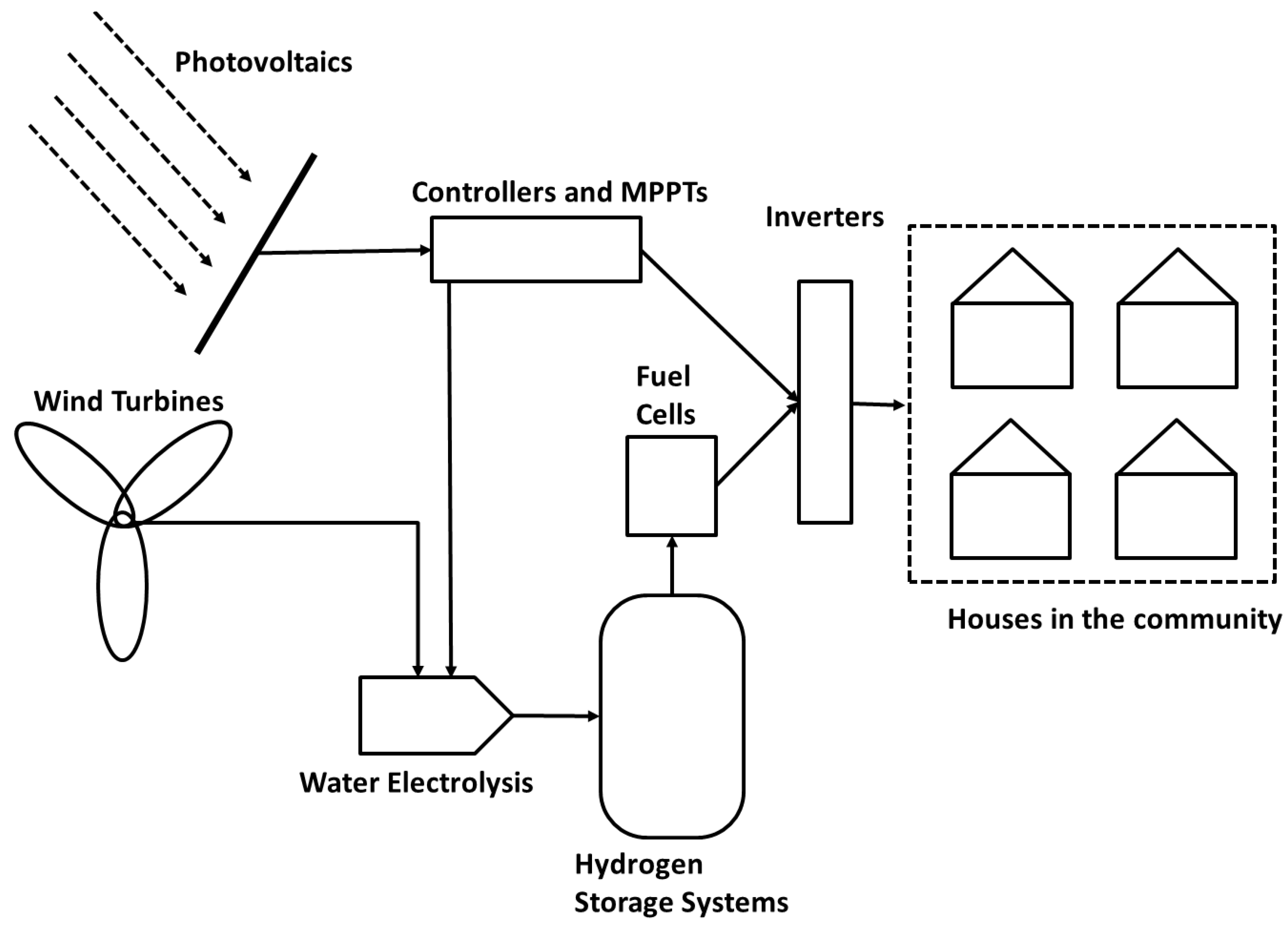
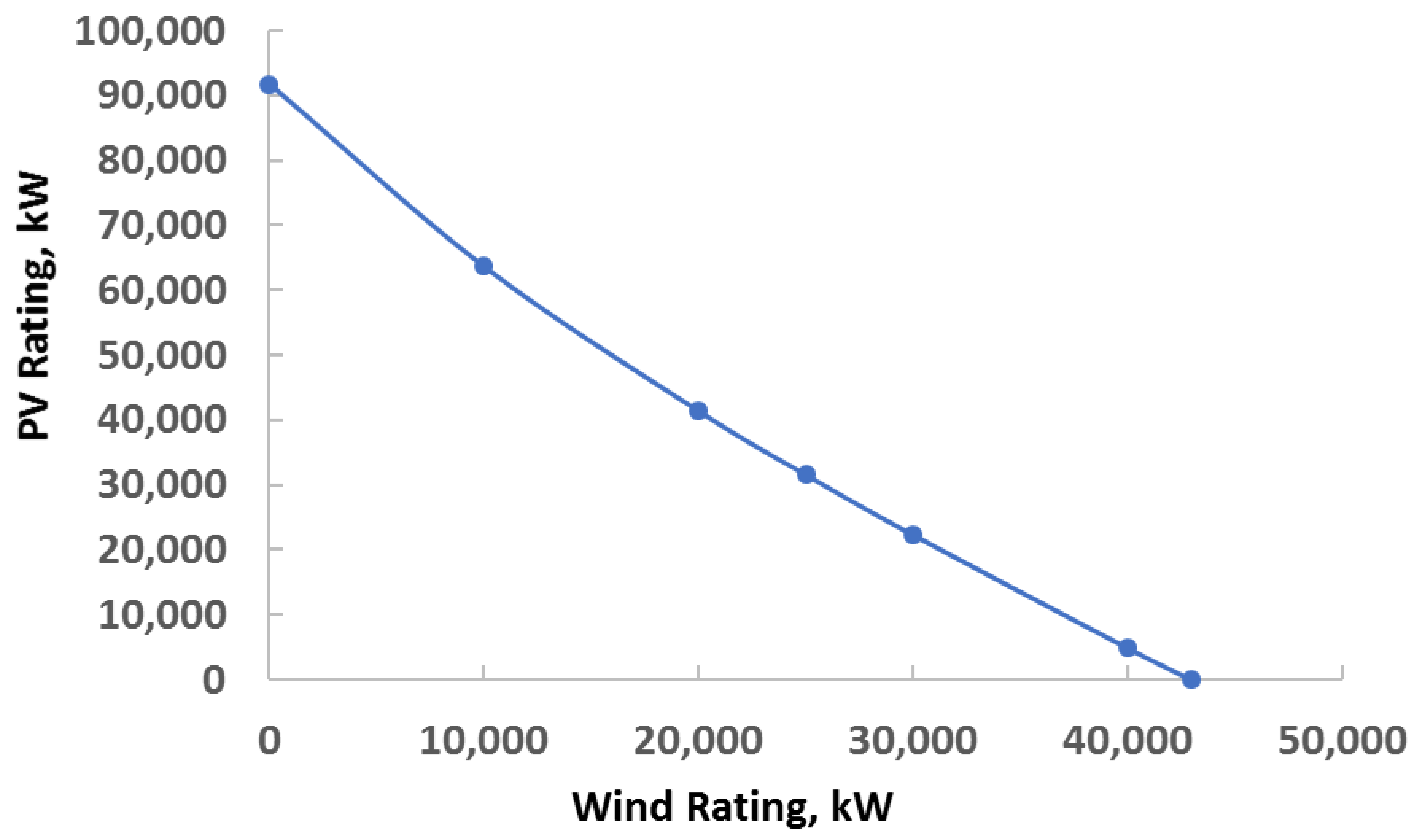

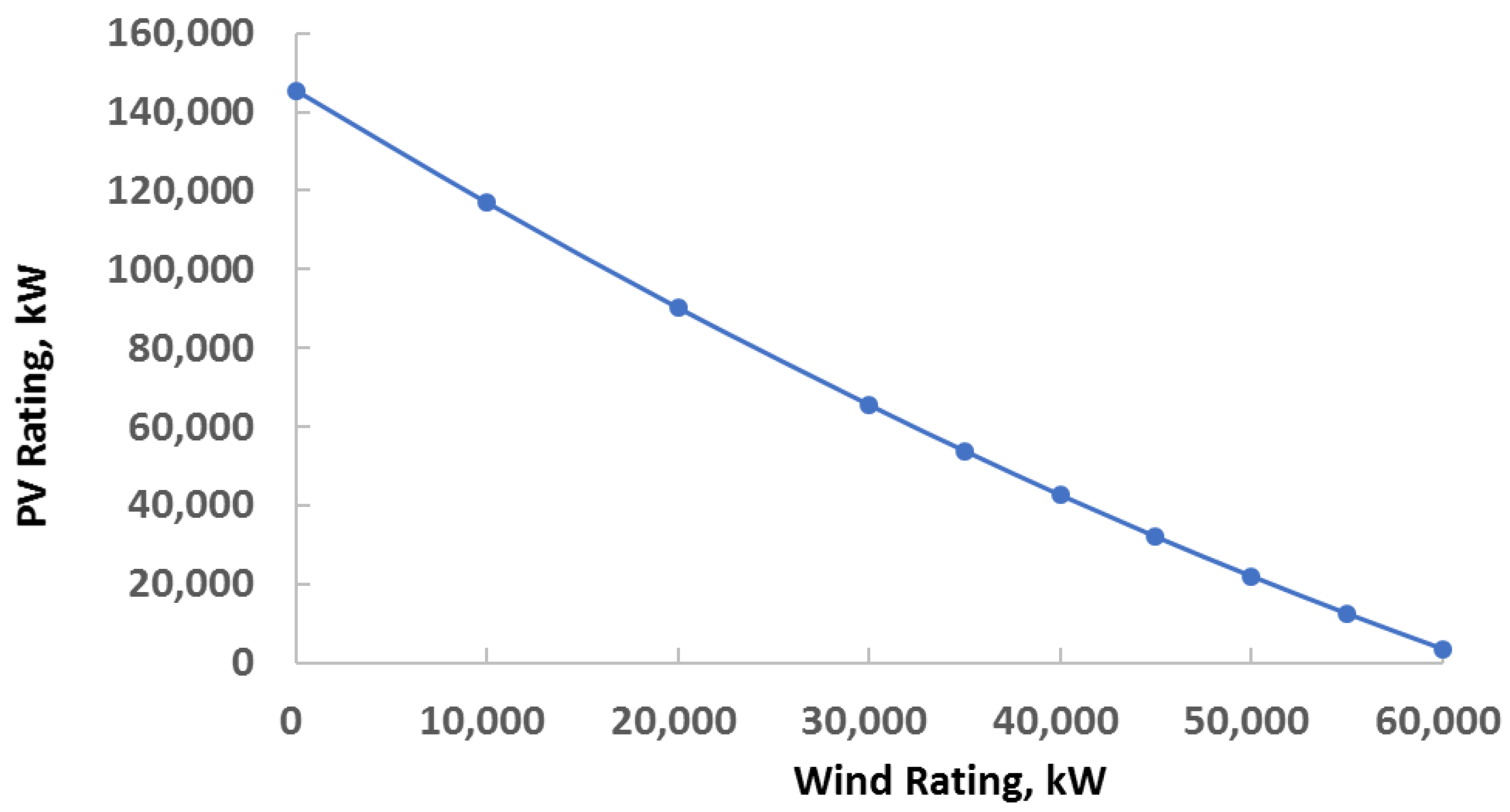
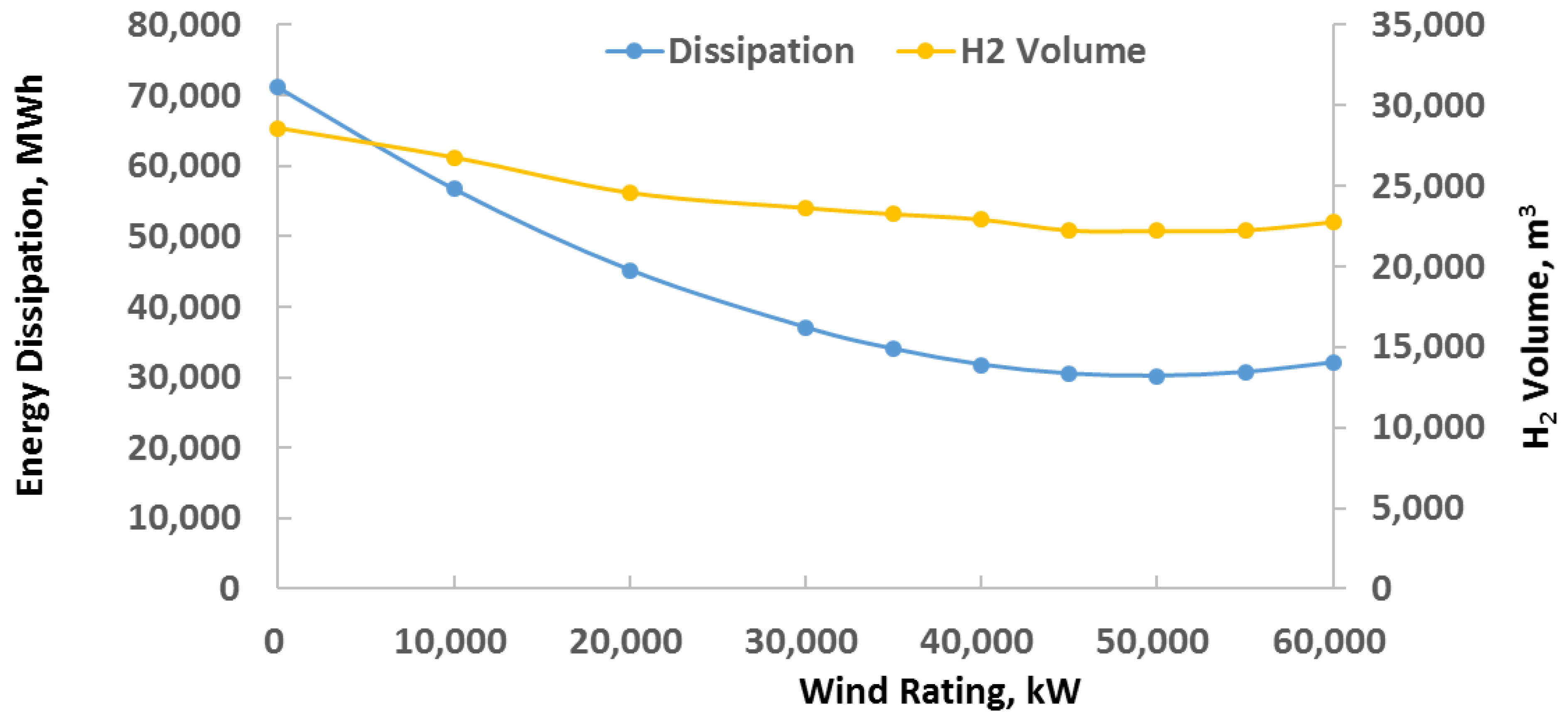

Publisher’s Note: MDPI stays neutral with regard to jurisdictional claims in published maps and institutional affiliations. |
© 2022 by the author. Licensee MDPI, Basel, Switzerland. This article is an open access article distributed under the terms and conditions of the Creative Commons Attribution (CC BY) license (https://creativecommons.org/licenses/by/4.0/).
Share and Cite
Michaelides, E.E. Transition to Renewable Energy for Communities: Energy Storage Requirements and Dissipation. Energies 2022, 15, 5896. https://doi.org/10.3390/en15165896
Michaelides EE. Transition to Renewable Energy for Communities: Energy Storage Requirements and Dissipation. Energies. 2022; 15(16):5896. https://doi.org/10.3390/en15165896
Chicago/Turabian StyleMichaelides, Efstathios E. 2022. "Transition to Renewable Energy for Communities: Energy Storage Requirements and Dissipation" Energies 15, no. 16: 5896. https://doi.org/10.3390/en15165896
APA StyleMichaelides, E. E. (2022). Transition to Renewable Energy for Communities: Energy Storage Requirements and Dissipation. Energies, 15(16), 5896. https://doi.org/10.3390/en15165896





